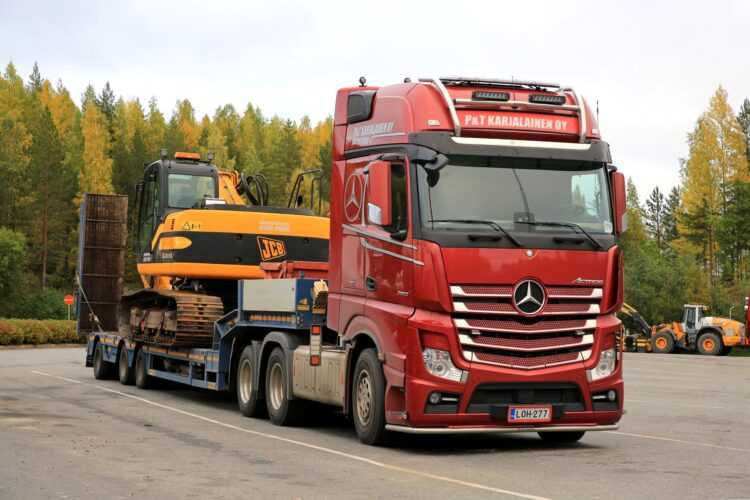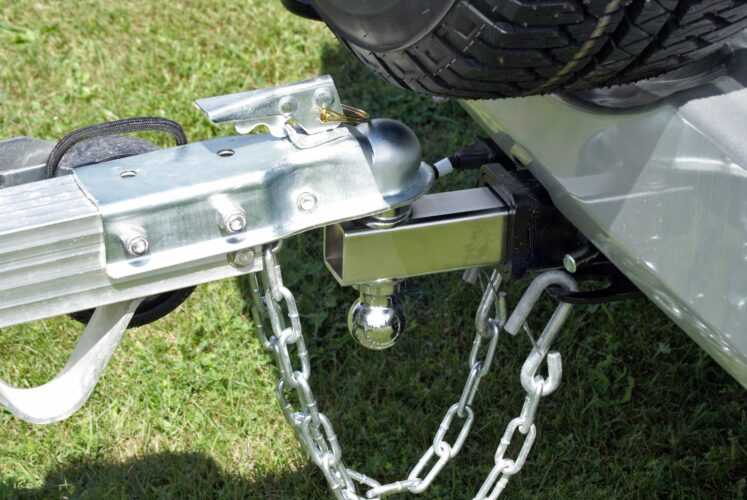Trailers 101 – The Difference Between Gooseneck Trailer And Bumper Pull Trailer
When choosing the right trailer for your hauling needs, there are two popular options: gooseneck and bumper pull trailers. While they serve the same purpose of transporting goods from one place to another, some key differences set them apart.
The vehicle’s towing capacity is one of the most important considerations, as not all vehicles are fit to pull both trailer types. A mismatch between these two aspects could be utterly dangerous.

Before searching for a trailer, weighing either option’s advantages and disadvantages is a must. For all the information you need to decide, keep reading here:
What Is A Gooseneck Trailer?
The unusual name comes from the shape of the trailer. Often confused with a fifth-wheel trailer, it has an extension in the front that bends up and over the back of a vehicle. It then attaches to a hitch in the bed of a pickup truck or another towing vehicle. The hitch, located in the center of the truck bed, and the trailer connect to it via a ball and coupler system.
On the other hand, a fifth-wheel trailer has a similar shape, but the hitch system differs significantly. Instead of having a ball hitch, it uses a plate coupler resembling that of a semi-truck.
One of the main advantages of a gooseneck trailer is that it offers better weight distribution than a bumper pull trailer. It means that you can haul heavier loads with more stability and control. Hence, larger companies employ such trailers to transport items, including the following:
- Heavy-duty machinery
- Large objects like racing cars
- Livestock
Gooseneck trailers are also more maneuverable than bumper pull trailers, making them ideal for tight turns and spaces. This feature becomes convenient when trying to move a heavy load into place. Drivers can, therefore, quickly put the trailer and its cargo in the correct spot, even in a tight shipping yard.
So, if you’re considering buying a gooseneck trailer for sale, first consult with professionals about the requirements for the vehicle and the hitch.

What Is A Bumper Pull Trailer?
A bumper pull trailer is also known as a travel trailer. It attaches to a hitch on a towing vehicle’s bumper, such as an SUV or a pickup truck. The hitch is a ball and coupler system, similar to a gooseneck trailer.
Bumper pull trailers are often less expensive than gooseneck trailers. For this reason, it makes them popular choices for recreational purposes, such as camping or road trips. Other common uses could include:
- Transporting horses
- Livestock
- Smaller equipment
One of the disadvantages of a bumper pull trailer is that it can cause more sway when hauling heavier loads, making it less stable than a gooseneck trailer. It also has a shorter turning radius than a gooseneck trailer. It is, thus, more challenging to maneuver in tight spaces.
Furthermore, drivers may have to practice their parking skills before they get the hang of it. Also, they must be more alert when driving to notice any sway from shifting cargo. However, it could be an excellent alternative for those who don’t own a pickup truck because it’s usually less costly than gooseneck trailers.
Which One Should You Choose?
Deciding between a gooseneck trailer and a bumper pull trailer ultimately depends on your hauling needs. It’s essential to consider aspects such as the weight of your cargo, your vehicle’s towing capacity, and your driving experience.
Some regions may have strict laws or regulations about which drivers can haul various-sized loads. Before investing in a new trailer, contact the local authorities for more information about what you need, like a special permit or license.
It’s also vital to properly maintain and inspect your trailer to ensure safe hauling and avoid any accidents or damage. Because of the heavy-duty loads, gooseneck trailer hauls may require more frequent inspections, repairs, or maintenance. In contrast, the bumper pull trailer could be less costly in time and money to maintain.
A good towing practice could be for drivers to check their trailers, hitches, and vehicles before attempting to carry any load, big or small. It may also be helpful to keep all the paperwork for the trailers up to date and handy should authorities require them.
Conclusion
In summary, gooseneck and bumper pull trailers are both viable options for transporting goods and equipment. Ultimately, choosing between these two types depends on your specific needs and preferences. So don’t hesitate to investigate the possibilities for finding the perfect trailer fit for its purpose. The above list could be a great starting point.




